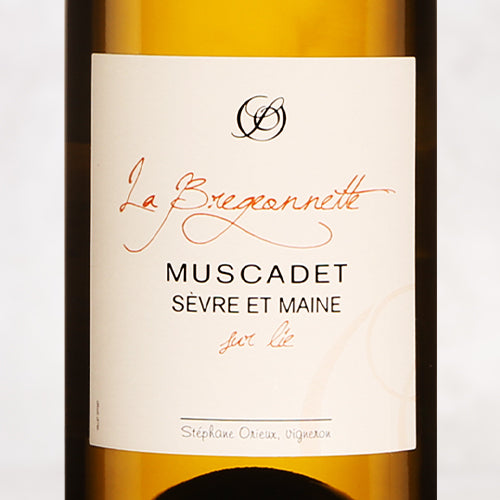Muscadet has taken the high-quality, locavore-centric, casual dining scene by storm. Almost any decent café that serves raw oysters has one or two nice Muscadets on the menu, likely by the glass. Gone are the days when we need to devote an entire paragraph to tell you what it is not (not at all sweet, not in any way related to Muscat) and we can focus on what it is: Hands down one of the best values in super sunny, saline, mineral laden white wine. Of course success breeds comfort, and not all Muscadets that hit these shores are created equal. That’s why we search high and low for bottles like Stéphane Orieux’s instant classic. This bottle is a pitch perfect encapsulation of everything we love about Melon de Bourgogne grown on the schist heavy soils of Sèvre-et-Maine. And it has that other component we love about great Muscadet, it’s a total steal!
Muscadet is a relatively large wine-producing region in the far western Loire Valley. Surrounding the ancient city of Nantes, its vineyards run right up to the Atlantic coast. The French have been drinking Muscadet as an everyday bistro white for many decades, and likely centuries, both in and outside of its home region. In general, the reputation was for solid, dry white wines that were totally fine and inoffensive. Of course, a few producers have been making more serious versions for many years, and those are exactly the domaines that first caught the attention of U.S. importers in the 1990s and early aughts. Though each had their own specific focus, they all began to implement sustainable and organic farming practices, reduce yields, and age their wines on the fine lees for longer periods of time. Later most also started using wild yeast fermentations and reducing the amount of added SO2.
Joseph Orieux was a true pioneer as one of the first to begin implementing all of these quality minded changes back in the 1960s. His son, Stéphane, picked up where his father left off and has been considered one of the region’s long standing experts on organic farming. Indeed, the great Marc Olivier of Domaine de la Pépière, often consulted Stéphane on farming practices. The Orieux estate, Domaine de la Bregeonnette, makes a range of wines, but their calling card is the ultra classic Sévre-et-Maine. The family vines are around the village of Vallet, at the heart of this subregion which itself is considered the heart of Muscadet, what Italians would call the “classico” zone. Sandwiched between the Loire river to the north, and the Sévre river to the south, the special combination of alluvial deposits, limestone sediment, and rocky mica-schist make this the ideal terroir for the Melon de Bourgogne grape to produce super precise, super racy white wines that are oozing with minerality.
Melon, as its name suggests, was brought to this region from Burgundy centuries ago and is likely a cousin to Chardonnay, or Aligoté (or both). And you would be forgiven for mistaking Orieux’s perfectly balanced charmer for top tier Chablis or a Puligny-Montrachet. But there is zero oak on this wine, all the texture comes from aging sur lie in tanks. That said you can certainly treat it like your favorite white Burgundy! Serve it cool at around 45-50 degrees in an all-purpose or Burgundy stem and all the mouth watering flavors of barely ripe apples, lemon-lime zest, almond skin, white pepper, sea salt, and of course oyster shells come shining through. It’s a no-brainer with anything from the raw bar of course, and likewise for summer salads and cheese plates, but I would go a little outside the box and pair it with some baja style fish tacos. It really goes great with almost any white wine pairing, and is super tasty all by itself. Bottom line is you need a bunch on hand for the rest of the summer, the fall, and into 2024!











